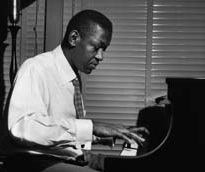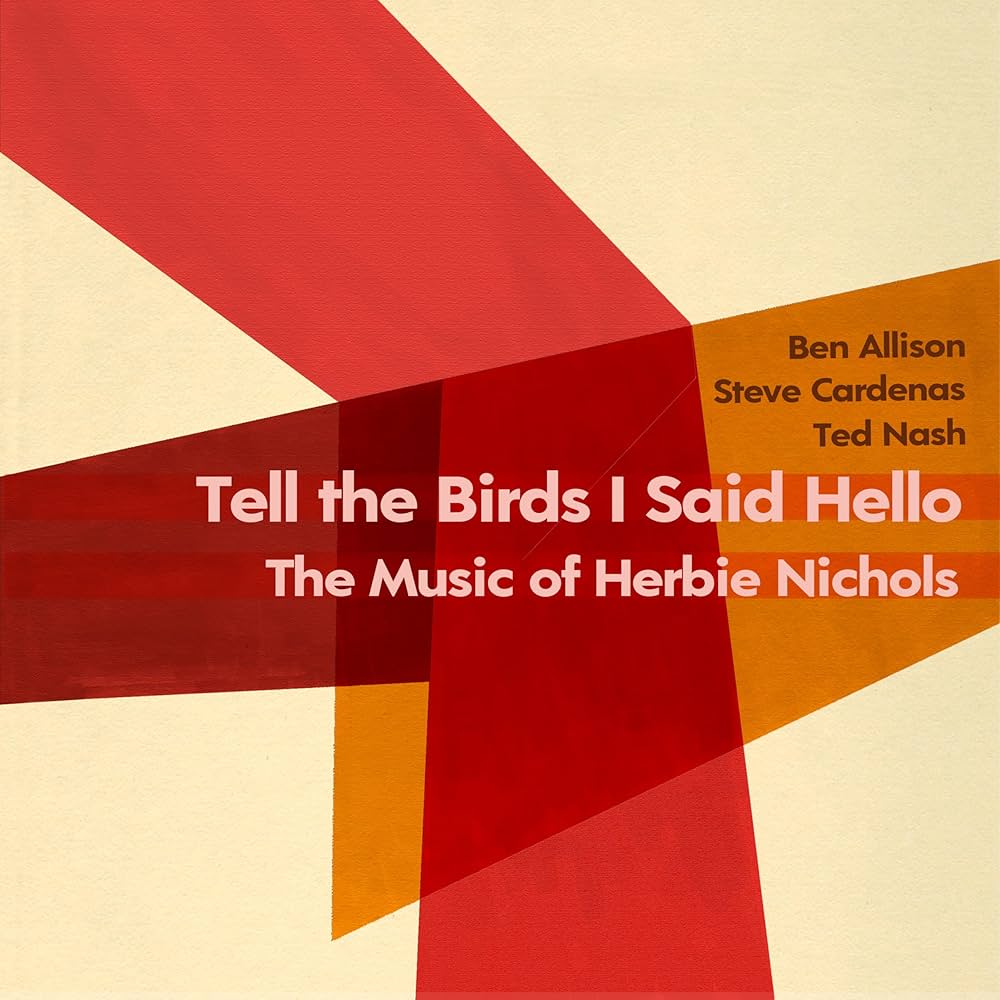Games And Codes – Herbie Nichols
As intricate and subtle as the title implies, this song is quintessential Herbie Nichols. Our exclusive solo piano recording by David Berkman, for our Herbie Nichols Centennial Project, is the first recording of Games And Codes.
- Recording: Herbie Nichols - The First 6
- Recorded on: December 14, 2019
- Label: jazzleadsheets.com (JLS 1058)
- Concert Key: D-flat
- Vocal Range: , to
- Style: Swing (medium)
- Piano - David Berkman
Video
- Check out our teaser video showing excerpts for the first 6 songs we're releasing that were recorded and filmed for our Herbie Nichols Centennial Project - a solo piano recording project featuring 23 gifted pianists playing 24 previously unrecorded compositions by Herbie Nichols. Order of pianists and Herbie Nichols songs (excerpts) on the teaser video: Jeb Patton - The Afterbeat Frank Kimbrough - Blues No. 1 David Berkman - Games And Codes David Kikoski - She Insists Frank Kimbrough - Tell The Birds I Said Hello Micah Thomas - Van Allen Belt
- Description
- Historical Notes
- Solos
- Piano Corner
- Bass Corner
- Drum Corner
- Guitar Corner
- Inside & Beyond
- Minus You
As suggested by the title, Games And Codes is Herbie Nichols at his most advanced—a subtle, intricate challenge with plenty of surprises. There are mixed meters, irregular phrase lengths, and unpredictable harmonies to navigate throughout. All is held together by Herbie's signature elegance and lyricism. Each section of the AABCD form is extended beyond the expected eight measures, either by added measures, meter changes, or both.
The two A sections are each set up by a pickup measure of 6/4—three half notes in the melody—which also reappears at the end of B to lead into C. The first A is nine measures, with the last two being one measure of 3/4 followed by the 6/4 pickup to the second A. This second A is extended to 10 measures all in 4/4, with a swing-styled circle-of-fourths phrase at the end. B is also 10 measures; the ninth is 5/4 leading to the 6/4 pickup again which sets up a 10-measure C section nearly identical to the second A. The final section, D, is eight measures but ending in one measure each of 5/4 and 6/4. The circle-of-fourths phrase reappearing at C sets up more tonal harmonies in D♭ major at D than in the other sections, but with a spiraling, ambiguous triplet melody.
Our lead sheet is based directly on Herbie's manuscript; all we added were the rehearsal letters to mark sections of the form. Check out David Berkman's recording for inspiration interpreting this song. In this solo piano setting he gives the 6/4 pickup measures rhythmic definition by voicing the melody as quarter-note chords, alternated with quarter notes in the bass. In ensemble settings these measures in particular are open to other possibilities of interpretation. For an ending, Berkman vamps and solos over the first seven measures of D before playing the D section melody out one last time.
The two A sections are each set up by a pickup measure of 6/4—three half notes in the melody—which also reappears at the end of B to lead into C. The first A is nine measures, with the last two being one measure of 3/4 followed by the 6/4 pickup to the second A. This second A is extended to 10 measures all in 4/4, with a swing-styled circle-of-fourths phrase at the end. B is also 10 measures; the ninth is 5/4 leading to the 6/4 pickup again which sets up a 10-measure C section nearly identical to the second A. The final section, D, is eight measures but ending in one measure each of 5/4 and 6/4. The circle-of-fourths phrase reappearing at C sets up more tonal harmonies in D♭ major at D than in the other sections, but with a spiraling, ambiguous triplet melody.
Our lead sheet is based directly on Herbie's manuscript; all we added were the rehearsal letters to mark sections of the form. Check out David Berkman's recording for inspiration interpreting this song. In this solo piano setting he gives the 6/4 pickup measures rhythmic definition by voicing the melody as quarter-note chords, alternated with quarter notes in the bass. In ensemble settings these measures in particular are open to other possibilities of interpretation. For an ending, Berkman vamps and solos over the first seven measures of D before playing the D section melody out one last time.
Frank Kimbrough demonstrated his idea of Games And Codes at our Herbie Nichols Piano Summit gathering this way CLIP , with a balladish start that eventually moves into slow swing. It's a much different approach than David Berkman's more energetic, driving stride.
November 14, 1962, is the date that is attached to this song, which makes it surely one of Herbie Nichols' last compositions; he died four months later. The advanced detail of Games And Codes' harmony, rhythm, and form prove that Herbie's composing continued to evolve in the years following his last recording session as a leader.
Check out all of "The First 6" titles released January 3, 2024.
November 14, 1962, is the date that is attached to this song, which makes it surely one of Herbie Nichols' last compositions; he died four months later. The advanced detail of Games And Codes' harmony, rhythm, and form prove that Herbie's composing continued to evolve in the years following his last recording session as a leader.
Check out all of "The First 6" titles released January 3, 2024.
Related Songs
Email Send Games And Codes to a friend
Send this page to a friend via email. Add your name or email in the first field. In the second, add one or more email addresses, separated by a comma.
- Recording: Allison / Cardenas / Nash - Tell The Birds I Said Hello
- Recorded on: April 8-9, 2023
- Label: Sonic Camera (SC 2401)
- Concert Key: D-flat
- Vocal Range: , to
- Style: Even 8ths (medium)
- Tenor Sax - Ted Nash
- Guitar - Steve Cardenas
- Bass - Ben Allison
Video
- Description
- Historical Notes
- Solos
- Piano Corner
- Bass Corner
- Drum Corner
- Guitar Corner
- Inside & Beyond
- Minus You
Though slightly rearranged, this trio version preserves all the intricacies of melody and harmony that make Games And Codes so exquisite. The form on this recording is a bit different from our lead sheet: AAB on the in head and solos. There is no pickup to the head; the 6/4 measures at the end of the first A and B have no melody and are filled in with quarter-note triplets in the bass. A few meter changes are smoothed out, with both the 3/4 measure in the first A and the 5/4 in B rounded to 4/4. In both head and solos, the A sections have an even-8ths feel for the first five measures and then go to swing; B swings throughout.
Tenor saxophonist Ted Nash and bassist Ben Allison each solo for one chorus. On the bass solo chorus, Nash plays the melody quietly as a background starting in the last two measures of the second A and continuing through B. After B, there is an out melody consisting of C (the same as the second A) and D as a coda.
Tenor saxophonist Ted Nash and bassist Ben Allison each solo for one chorus. On the bass solo chorus, Nash plays the melody quietly as a background starting in the last two measures of the second A and continuing through B. After B, there is an out melody consisting of C (the same as the second A) and D as a coda.
Perhaps surprisingly, “Tell The Birds I Said Hello” is far from the first album of Herbie Nichols compositions without a pianist. There have been several such tributes, most notably guitarist Duck Baker’s 1996 solo album “Spinning Song.” Other leaders who have recorded Nichols’ music in piano-less instrumentations include trombonist Roswell Rudd, cellist/bassist Buell Neidlinger, guitarist Eric T. Johnson, and drummers Lucas Gillan (with a chordless quartet) and Enrique Heredia.
`
`
Related Songs
Email Send Games And Codes to a friend
Send this page to a friend via email. Add your name or email in the first field. In the second, add one or more email addresses, separated by a comma.

Herbie Nichols
January 3, 1919 – April 12, 1963
Don Sickler "On January 3, 2019, we were at the Van Gelder Recording Studio celebrating Herbie's 100th birthday with his family and pianists Frank Kimbrough and Glenn Zaleski. Both Frank and Glenn each recorded a previously unrecorded Herbie Nichols composition, on the same piano Herbie played for his Blue Note sessions. These were the initial recordings that started my new project, the Herbie Nichols Centennial Project, which debuts January 3, 2024. Read more...
There was a problem.
...




